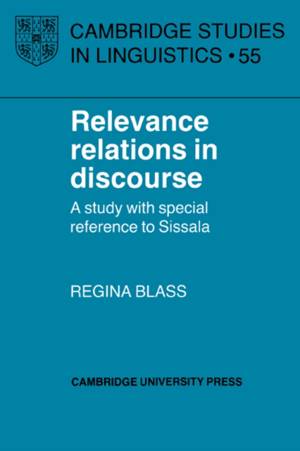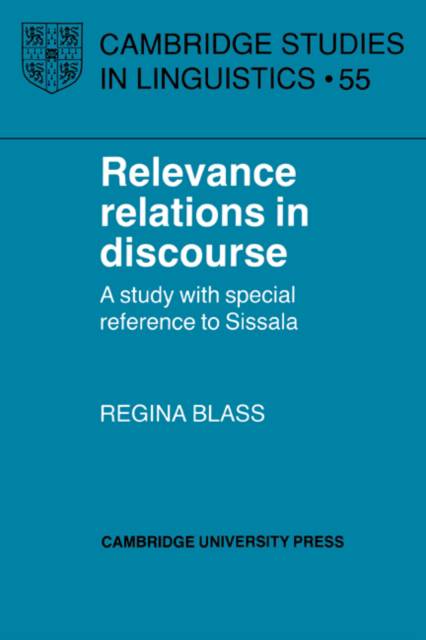
Je cadeautjes zeker op tijd in huis hebben voor de feestdagen? Kom langs in onze winkels en vind het perfecte geschenk!
- Afhalen na 1 uur in een winkel met voorraad
- Gratis thuislevering in België vanaf € 30
- Ruim aanbod met 7 miljoen producten
Je cadeautjes zeker op tijd in huis hebben voor de feestdagen? Kom langs in onze winkels en vind het perfecte geschenk!
- Afhalen na 1 uur in een winkel met voorraad
- Gratis thuislevering in België vanaf € 30
- Ruim aanbod met 7 miljoen producten
Zoeken
Relevance Relations in Discourse
A Study with Special Reference to Sissala
Regina Blass, Blass Regina
€ 204,95
+ 409 punten
Uitvoering
Omschrijving
Using data from Sissala, a previously unanalyzed language, this book shows that the analysis of text and discourse is best approached from a cognitive rather than a strictly linguistic point of view. In two introductory chapters, Regina Blass argues that Sperber and Wilson's relevance theory, a general account of communication and cognition, sheds more light on conversational data than do alternative linguistic approaches based on such notions as cohesion, coherence, and topic. In subsequent chapters, she discusses the Sissala equivalents of words such as "indeed," "so," "after all," and "also," and compares them with their English, French, and German counterparts. This book offers convincing evidence that although cultural backgrounds may vary considerably, the principles involved in utterance interpretation are universally the same.
Specificaties
Betrokkenen
- Auteur(s):
- Uitgeverij:
Inhoud
- Aantal bladzijden:
- 300
- Taal:
- Engels
- Reeks:
- Reeksnummer:
- nr. 55
Eigenschappen
- Productcode (EAN):
- 9780521385152
- Verschijningsdatum:
- 22/11/1990
- Uitvoering:
- Hardcover
- Formaat:
- Genaaid
- Afmetingen:
- 161 mm x 237 mm
- Gewicht:
- 589 g

Alleen bij Standaard Boekhandel
+ 409 punten op je klantenkaart van Standaard Boekhandel
Beoordelingen
We publiceren alleen reviews die voldoen aan de voorwaarden voor reviews. Bekijk onze voorwaarden voor reviews.









